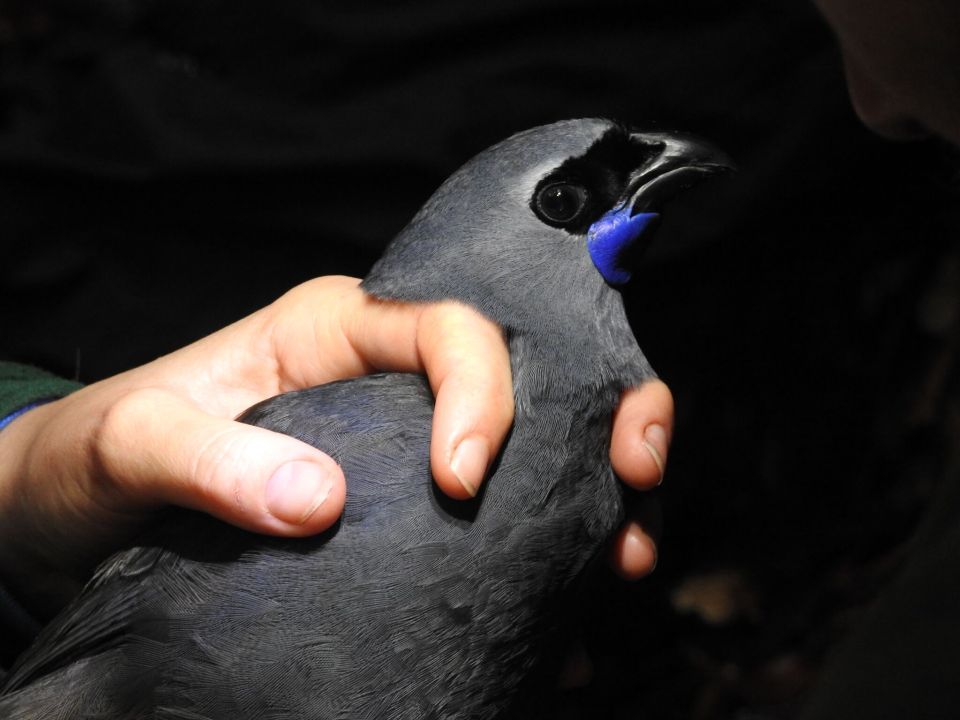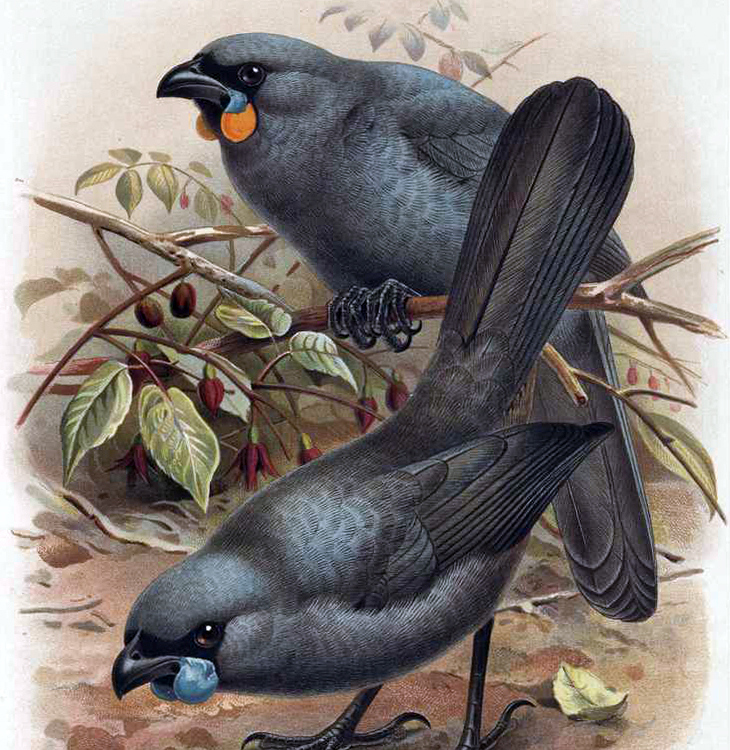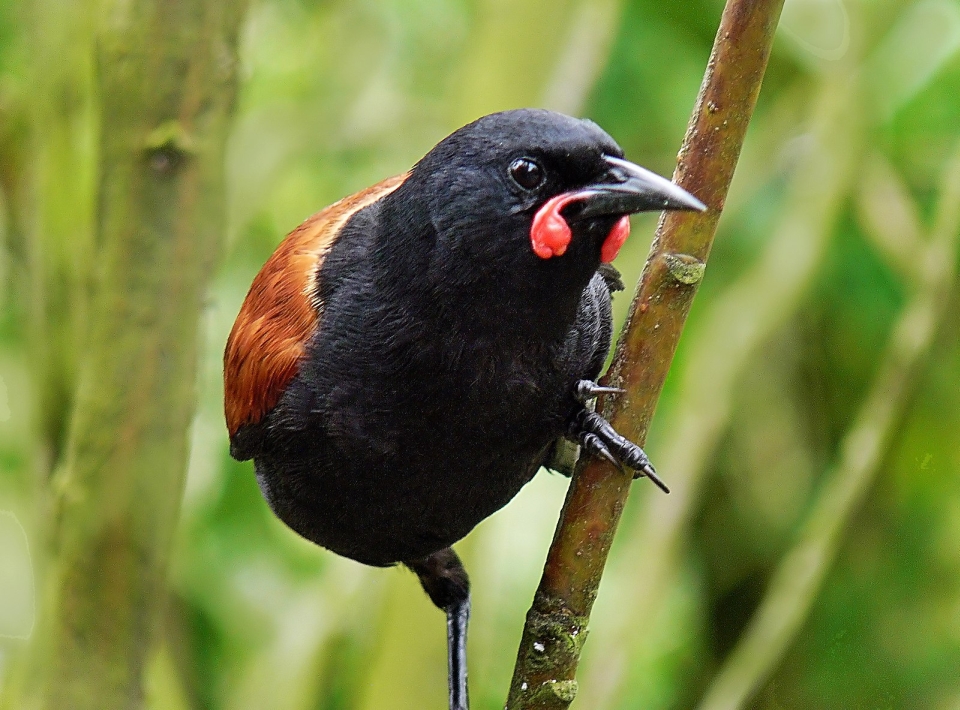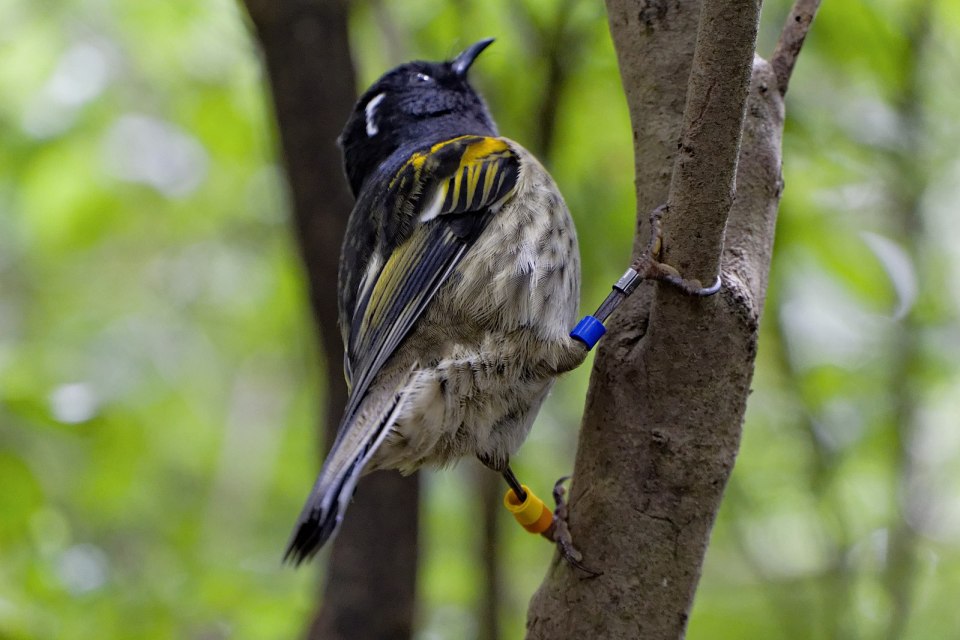Kōkako are wattlebirds with a haunting song.
There are two species of kōkako;
- North Island kōkako
- South Island kōkako.
The South Island kōkako is now presumed to be extinct.
Other New Zealand wattlebirds are the rare tieke or saddleback and the extinct huia. These birds are all endemic to New Zealand and form the Callaeidae family.
Kōkako are among New Zealand’s most ancient flying birds. Their ancestors (which included the ancestor of the stitchbird) may have been on the land mass that split from the supercontinent of Gondwana to become New Zealand.
Appearance
Kōkako are often heard rather than seen. Kōkako weigh around 230 grams and are around 38 centimetres in length.
Europeans called kōkako the blue-wattled or orange-wattled crow.
Kōkako have:
- long black legs
- a long tail
- a short, strong bill
- striking blue-grey plumage with a black ‘face mask’
- the North Island kōkako has blue wattles (fleshy pads hanging from each corner of the bill), while the South Island bird’s wattles were orange.
The grey ghost
The South Island kōkako is rarely seen, with the last accepted sighting near Reefton in 2007. Occasional reports of its call or other signs give tantalising hope of finding a remnant population of this blue-grey bird but if it is not extinct it is extremely low in numbers.
You can report any sightings on the South Island kōkako website
Magic song
Of all New Zealand forest birds, the kōkako is considered to have the most beautiful song. Kōkako song varies from region to region, and the birds respond less to kōkako from outside their home patch. South Island kōkako only called around breeding time, which has added to the difficulty of locating them.
Flight
Kōkako are poor flyers. Their short, rounded wings only allow flights and glides of up to 100 metres. Otherwise they move along tree branches from one level up to another, running and hopping on their long, strong legs. They are often compared to squirrels because of the way they hop and leap between trees. They are very mobile despite their poor flying abilities.
Feeding 
Kōkako have a mixed diet which changes with the seasons:
- During winter kōkako mainly eat leaves, fern fronds and some insects
- In spring kōkako feed more on nectar and leaf buds
- Over summer kōkako mainly eat fruit, moths, caterpillars, wētā and other invertebrates
Breeding
When food is abundant, kōkako raise more than one brood of chicks a year. Nesting usually takes place from October to March. The female lays two or three pinkish-grey eggs, which she incubates alone for 20 days. The male feeds her on or near the nest, and later both feed the chicks, which fledge in 30 to 45 days. Young remain partially dependent for food from four months to a year.
Juvenile kōkako have pink wattles which gradually turn to vivid blue wattles as they age.
Complete the kōkako quiz >







